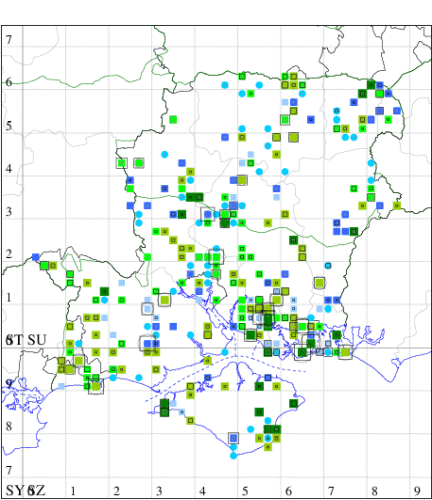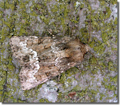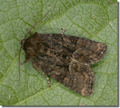Tawny Marbled Minor
Oligia latruncula
Checklist Number73.174 [B&F: 2339]
Verification
Record requires retention of specimen until confirmed, and may require dissection. Consult with CMR if unsure
Common in grassland, woodland rides, gardens and a wide range of other habitats throughout much of the British Isles. In Hampshire and on the Isle of Wight widespread and common, possibly more so than Marbled Minor O. strigilis. Wingspan 24-27 mm. Marbled Minor O. strigilis, Rufous Minor O. versicolor and Tawny Marbled Minor O. latruncula, especially their melanic forms, can only reliably be separated by dissection of the genitalia. Typical examples of Tawny Marbled Minor have the forewing blackish brown, the outer area with a distinct coppery burnish; reniform and orbicular stigmata usually indistinct except with a lens; antemedian line dentate, often very indistinct and incomplete; postmedian line curving more evenly to dorsum than in Marbled Minor (MBGBI Vol 10). It is possible with experience to assign well-marked individuals to Tawny Marbled Minor at a particular site once the observer is familiar with the forms present in that area. Larva feeds on various grasses, including Cock's-foot.


The abundance in each month is indicated as follows:
 No records
No records Very occasional
Very occasional Irregular
Irregular Uncommon
Uncommon Off-peak, but not unusual
Off-peak, but not unusual Off-peak, but not unusual
Off-peak, but not unusual Main flight time
Main flight time| J | F | M | A | M | J | J | A | S | O | N | D | |
|---|---|---|---|---|---|---|---|---|---|---|---|---|
| Adult |  |  |  |  |  |  |  |  |  |  |  |  |
| Larval |  |  |  |  |  |  |  |  |  |  |  |  |





